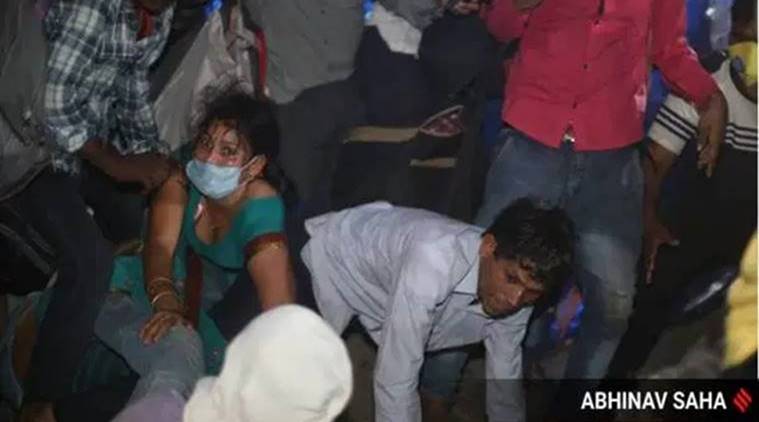 Stampede like situation at Delhi’s ISBT bus station where migrant workers were waiting to head back home amid a nationwide lockdown. (Express Photo by Abhinav Saha)
Stampede like situation at Delhi’s ISBT bus station where migrant workers were waiting to head back home amid a nationwide lockdown. (Express Photo by Abhinav Saha)
Written by Ipsita Sapra
If migration had a face, would it be a male one?
Think about the picture of migrants in the Bandra station or at Delhi Bus Stand? Why weren’t there any women in the frame? This article is an attempt to steer the gaze to the women question in migration in the wake of the COVID 19 situation.
Who is a quintessential migrant?
What about the women who migrate?
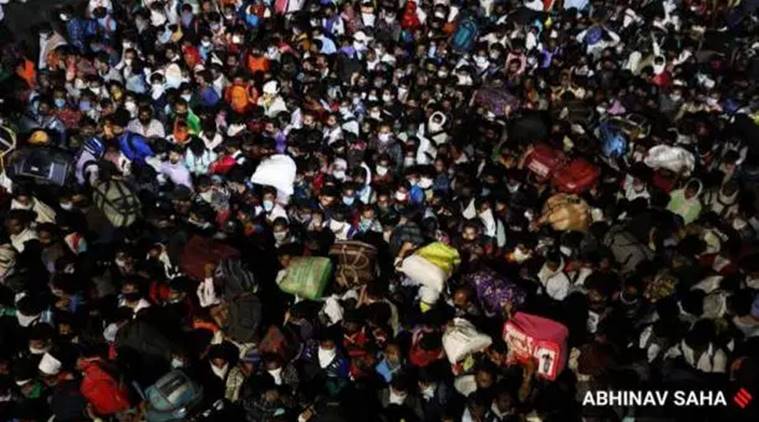 Hundreds of migrant labourers await their buses at Delhi’s ISBT bus station (Express Photo by Abhinav Saha)
Hundreds of migrant labourers await their buses at Delhi’s ISBT bus station (Express Photo by Abhinav Saha)
Women migrate in family units that work together. Single women work as live-in domestic help in the metropolis of Delhi, Mumbai, Chennai. Women in the service economy work in salons and beauty parlours. Women work in restaurants as waitresses and usherettes. Women work as assistants in large stores.
One set of women are the wives. The accompanists. The cooks, the cleaners, and the co-workers in construction sites or family units working in brick-kilns. The piece-rate worker at the lowest rung of a global supply chain. The silently accompanying ‘other’ in an overwhelmingly male phenomenon of mobility. These are women who are still captured in the camera lens as walking with their husbands and children.
However, the single women migrants while being an ubiquitous part of our daily existence are completely invisible from the media gaze.
What brought single women to the cities?
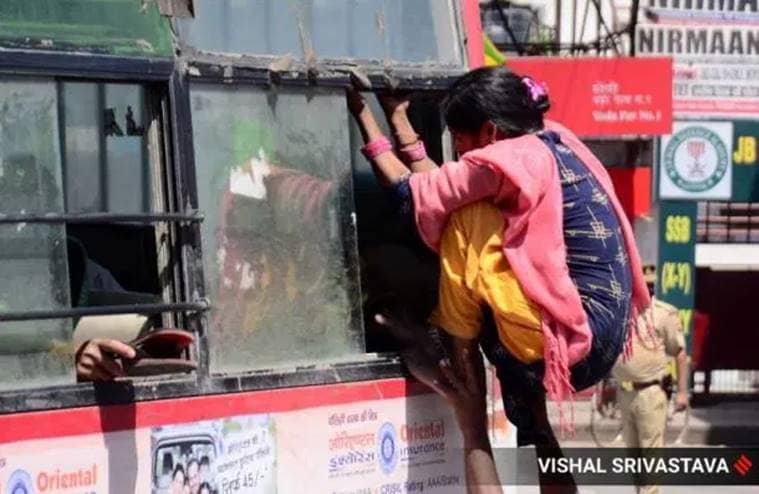 A woman migrant was seen climbing on a bus to enter through the window.
A woman migrant was seen climbing on a bus to enter through the window.
The migration of single women for work has been on the rise with the middle-class-isation of the Indian cities. This middle-class-isation, an outcome of the growth of the service sector, has spurred a series of consequences. It has created jobs for both men and women. Large numbers of nuclear families with both spouses working in professional spaces have created a set of service demands in the family. These are primarily met by the lower echelons of the society. As the educated middle-class women join the workforce, domestic work, including care for the children and the elderly, which has conventionally and conveniently seen as women’s work, have been outsourced to women from economically poorer sections. Such women not only take over the drudgery of housework but also the responsibilities of care work, making it possible for middle-class women to pursue a career.
A recent study by the International Labour Organisation (ILO) shows that traits now sought in domestic help are professionalism, communication, etiquette, demonstrating the need for new-age skills and also a subtle transfer of responsibilities happening in the middle-class families. Domestic help call-centres and a chain of contractors work to get ‘trained’ live-in domestic help from the migration corridors- Jharkhand to Delhi, Chattisgarh to Mumbai, Nepal to Delhi/ Chandigarh.
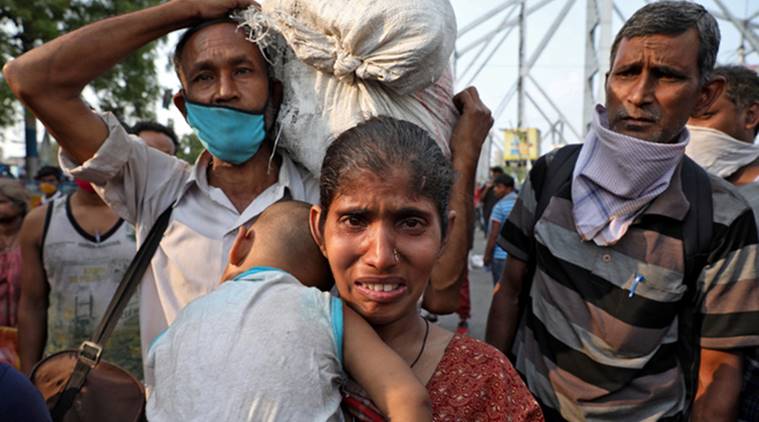 A woman at Howrah railway station breaks down after realising she has missed out on food being distributed to migrant workers. (Photo: Reuters)
A woman at Howrah railway station breaks down after realising she has missed out on food being distributed to migrant workers. (Photo: Reuters)
Leisure is the other archetypal part of the contemporary middle-class existence. Nothing captures it better than the explosion of malls, multiplexes, and restaurants. The middle class’s penchant for retail-therapy, their idea of a weekend chill out in pubs and discotheques, their Barista, Starbucks and Cafe Coffee Day meet-ups, their family get-togethers in restaurants have created several employment opportunities in the cities for migrant women.
Most of the jobs mentioned employ migrant women who are typically from a very similar socio-economic background as their counterparts, the migrant men. However, while the men are so visible, the women remain conspicuously absent from the stories in the media.
Why is it that they are not seen as rushing home? Is it because they have imbibed the notions of model citizenship as recommended by the government? Or is it that the cities, the epitome of opportunities, have not created possibilities for such women to claim a stake to exit as and when they wish to.
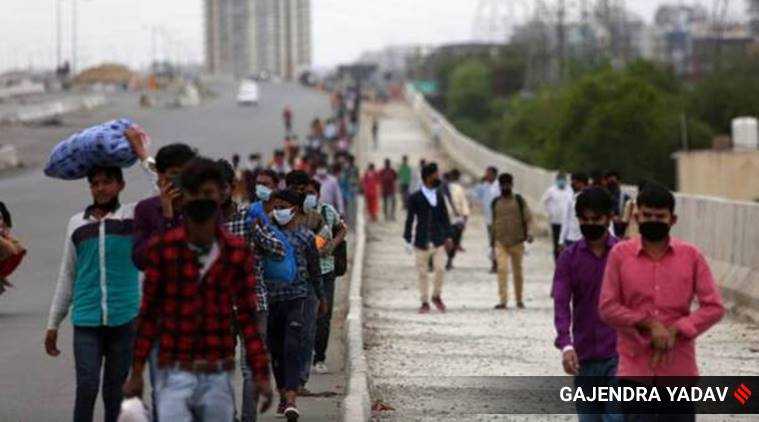 Migrant workers walking towards their hometown after the lockdown announcement.
Migrant workers walking towards their hometown after the lockdown announcement.
One possible reason for this could be that the public domain is largely a male domain- designed, navigated, and dominated by men. Women are a new entrant. Their position in the public space is still contested. It is quite possible that the women are discouraged by their families from trying to return. Indeed the images of crowded terminuses, the reports about police action might deter any exit plans.
Where does that leave the migrant women? Can policies respond to their specific needs?
‘Safe City’ initiatives to make city spaces safe and inclusive, started by NGOs like Jagori and supported by UNWOMEN, are being undertaken by the government across the major urban centres. The specific experiences of migrant women in the city across the intersections of geographies and occupations need to be integrated by these and similar initiatives.
Gender-responsive transport policies also have far-reaching implications for migrant women. While working towards a larger goal of making public transport inclusive and safe, intermediate steps including designated ‘women’s-only’ transport for migrant women willing to return may be considered.
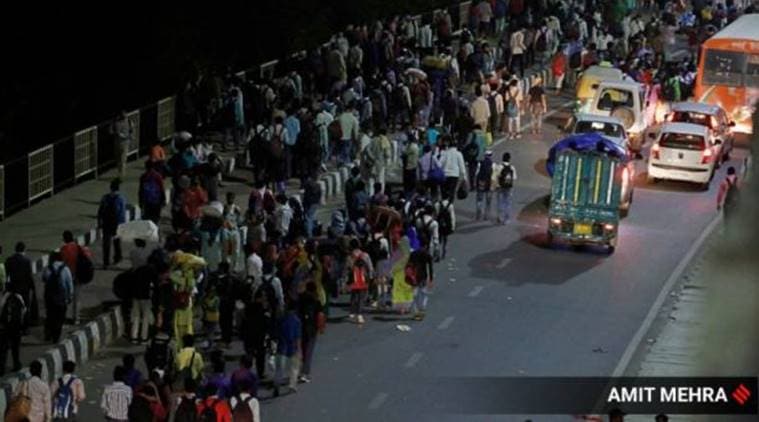 Migrant labourers going on the NH-24 Hiway after the lockdown. (Express Photo: Amit Mehra)
Migrant labourers going on the NH-24 Hiway after the lockdown. (Express Photo: Amit Mehra)
In this context, the Why Loiter? initiative in Mumbai, a movement spearheaded by women activists, offers interesting perspectives. The movement captured women reclaiming public spaces by posting pictures and narratives of them exploring such spaces for pleasure. Emphasising that men and women experience cities differently, the initiative asserted women’s right to the city. An important takeaway was the insight that cities develop over time through economic and social movements. Such movements bring greater numbers of women out into the public spaces. As their tribe increases, it becomes the ‘new normal’. It set role models, encouraging more women, including migrant women, to lay claim to the cities. Such a perspective is imperative in the wake of the cover 19 situation to make the policy responses more gender equal.
Cities, however, do not get an instant makeover to become gender-responsive.
Certainly not when hit by a pandemic.
Even when there is intent on the part of the government to be responsive, they might have limited capacities.
These need long-term investments and coming together of a well-synced machinery of public institutions. These include institutions managing the physical infrastructure such as street lights. Police teams who swiftly act on violations. Transport arrangements that understand the safety needs of women. Helplines that have been active all along. All of these take time to build and be accepted. The cities owe all of these and more to its women migrants.
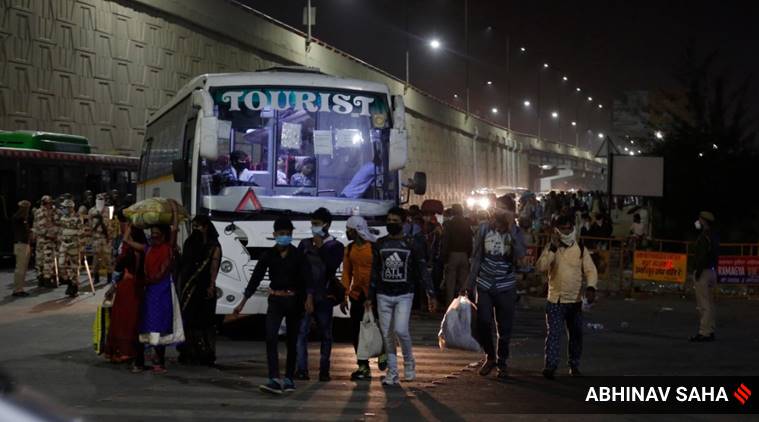 Migrant workers at Anand Vihar Bus Station in New Delhi. (Express photo/Abhinav Saha)
Migrant workers at Anand Vihar Bus Station in New Delhi. (Express photo/Abhinav Saha)
Will this pandemic change women migrant’s relationship with cities? Will it limit the geographies and spatial range that women choose to explore?
What is a city after all, if it does not offer freedoms- not just to explore but also to return home?
It’s time we steer the gaze to the women who run the cities to seek answers to these questions.
Ipsita Sapra works at the School of Public Policy and Governance, Tata Institute of Social Sciences, Hyderabad